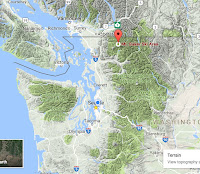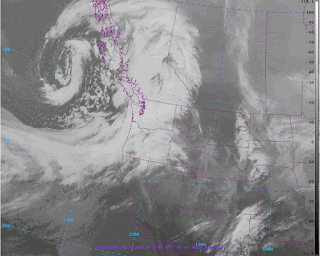Let's analyze the possibilities, making use of the most powerful probabilistic forecasting tools at our disposal. We will attempt to avoid the problems experienced during the October 15th storm by highlighting the forecast uncertainties and the use of ensembles.
Snow Forecasting is HARD
Let me begin by noting a key point: it is difficult to get lowland snow around Puget Sound because the Pacific Ocean and Puget Sound are relatively warm (around 50F). It is easy for us to be mild and wet and frequently we are cool and dry. But to be cool and wet is very hard, demanding a rare configuration of pressure and winds. As a result, snow is the most difficult forecast problem in our area.
As I have mentioned frequently, all forecasts should be probabilistic and the most potent tool to create probabilities and to determine uncertainty is through the use of ensemble forecasts--running weather models many times with different initial states and model physics (e.g., moist processes).
So let's look at some ensembles! We can start with the NOAA/NWS GEFs ensemble of 21 members (relatively coarse 35 km grid spacing) for snow over the next week (see below). Dates/times are in UTC/Z, the average of all the ensemble members (the ensemble mean) is shown in dark black, the individual ensemble members are in light gray, and the blue line is single high-resolution (13 km) GFS forecast.
Note that the ensemble mean shows about 1.5 inches by 4 AM Monday (12Z, 5 December) and there is considerable spread (from 6 inches to 0). Most members produce 1-4 inches. The high-resolution run is very different, with no snow until later in the week.
The top panel shows the accumulated snowfall for each ensemble member for Seattle. Note that most members show snow starting on Sunday or Monday (Dec 4th or 5th) and several members show much more snow later in the week (8th or 9th).
What about temperature in Seattle? Here are the ensemble forecasts for high and low temperatures from the EC model. The single high resolution forecast is black, the ensemble mean is green, and the range of the forecasts are shown by the blue "whiskers". The rectangles encompass the 50% of forecasts closest to the mean.
The big story....a major cool down, with daily highs dropping from 46-47F to around 40 F on Monday. Even lower after that. After around 200 h, the uncertainty becomes very, very large.
So based on the ensembles, I feel pretty confident to forecast much cooler temperatures next week. And the ensembles suggest a good chance of getting at least a dusting early next week, with more later.
Finally, with all that I have said about uncertainty, lets look the latest UW high-resolution run, which is driven by the high-resolution NOAA/NWS GFS model.
On Sunday at 1 AM, a very strong Pacific cold front is pushing southward over NW Oregon, with cold temperatures behind.
By 4 AM Monday, cold air (blue/purple/white colors) had spread over our region.
By 1 PM Monday, a low-center had formed just off of the SW WA coast-- this is getting close to a typical snow pattern for Puget Sound.
The 24h total now forecasts ending 4 AM Sunday indicates LOTS of snow over the WA Cascades (skier will rejoice)
The subsequent 24 h brings lowland snow, mainly over SW WA and western Oregon. But the uncertainty is very large, so be prepared for the details to change.Bottom line of the above: there is a high probability that we will see substantially colder temperatures over the region starting Sunday. It is probable but not certain that there will be some light snow at lower elevation on Monday (with the potential for more in some locations). There is a good chance of heavier snow (a few inches) later in the week. At this point, the ensemble don't indicate a major regional low level snow. The mountains will get large amounts of snow, including the lower passes.





















































